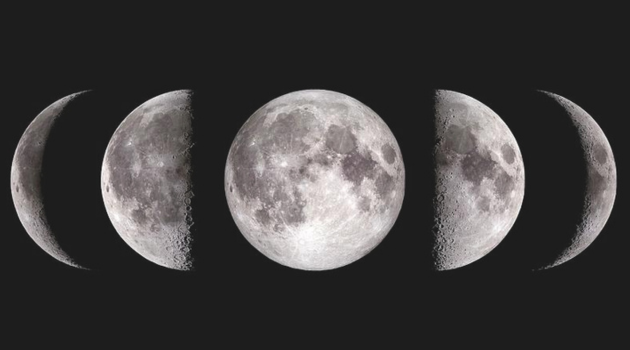NASA’s Lunar Experts View Moon, Look Forward to Solving Mysteries
Between the highly visible annular eclipse on Oct. 14, the International Observe the Moon Night on Oct. 21, and a partial lunar eclipse during a full moon on Oct. 28, last month was exciting for NASA experts and lunar enthusiasts. Now, with roughly one year to go until the Artemis II mission around the Moon, even more eyes are likely to be trained on Earth’s constant companion.

Although humans have studied the Moon for centuries, it remains a source of wonder and mystery. The natural satellite’s harsh environment is one source of ongoing fascination. NASA’s lunar experts are also excited about research opportunities enabled by the return of humans to the lunar surface through Artemis.
Moon dust, or “regolith,” for example, is known to present a particular challenge for human exploration because of its abrasive nature. NASA is researching a number of solutions, including those proposed by student projects.
“Regolith is just the technical name for soil produced only through physical processes like impact, whereas a true soil includes chemical or biological processes in addition to physical processes when it is created,” said Dr. Ryan Zeigler, lunar sample curator in ARES’ (Astromaterials Research and Exploration Science Division) Astromaterials Acquisition and Curation Office.
The Moon’s regolith contains a considerable amount of often-sharp glass fragments. The solar wind that constantly bombards the Moon – without the protection of a magnetic field or atmosphere, like here on Earth – essentially charges these fragments and other regolith grains, creating a “static cling” effect on spacesuits and other materials. The Moon’s surface has been churned into very fine-grained regolith due to billions of impacts of all sizes
“Trying to mitigate for this effect is very difficult,” Zeigler said.
Another interesting aspect of the lunar environment is the presence of maria, or large, flat plains of solidified basaltic lava, which is similar to some rock types found on Earth. There are many such flat plains on the near side of the Moon, but almost none on the far side. Zeigler said this difference may be due to variations in the Moon’s chemical composition, which caused the interior of the near side of the Moon to heat and melt more and produce more magma. The Moon’s crust on the near side is also thinner than the crust on the far side, he said, making it easier for the magma to break through the near side crust. However, the fundamental reason for these differences between the near and far sides is unknown.
“There have been many theories related to tidal forces, impacts, and other processes, but there is no consensus at this time,” Zeigler said.
Orbital and surface measurements have also enabled the study of a possible magnetic field.
“The Moon does not have a present-day dipolar magnetic field like Earth, but it does have evidence of a past magnetic field,” said Dr. Renee Weber, chief scientist of NASA's Marshall Space Flight Center. That evidence includes magnetized crustal remnants detected and mapped from lunar orbit.
Zeigler also noted that orbital images suggest the presence of significant magnetic anomalies at the lunar surface.
“One additional thing worth mentioning are lunar swirls, which are beautiful and enigmatic features on the lunar surface that seem to be associated with magnetic anomalies,” Zeigler said. “Whether they are caused by the interaction of the Moon with Earth’s magnetic field, remnants of the ancient lunar field, or something else is still unknown.”
Some research on future Artemis missions may help scientists better understand the Moon’s internal geological processes. Weber and Zeigler said many Apollo missions carried seismometers that detected a variety of moonquakes with different possible sources. Some of these were “shallow moonquakes,” distinct from the deep moonquakes caused by tidal forces and the quakes caused by meteorite impacts. Scientists think shallow moonquakes may be due to the Moon shrinking.
“This is a case where scientists have reexamined the Apollo-era data and learned an awful lot about the interior of the Moon from it,” Zeigler said. “A top priority for going back to the Moon will be to get a lunar seismic network set up to allow a more robust study of the lunar interior.”
“I’m very excited about landing on the rim of the largest impact crater in the Earth-Moon system,” said Dr. Noah Petro, project scientist for Artemis III and for NASA’s Lunar Reconnaissance Orbiter mission. “The enormous South Pole-Aitken Basin is the oldest recognized impact crater on the lunar surface, and as such is one of the most scientifically important targets for lunar science.”
Samples collected near the crater’s rim may help scientists understand the crater’s age, how it formed, and from what depth in the crust of the Moon the surface material originated.
“All those questions are fundamental to knowing what was happening in the Earth-Moon system over 4 billion years ago,” said Petro.
In addition to studying the South Pole-Aitken Basin, Zeigler said he is looking forward to retrieving samples that might contain volatiles like ice that became trapped in the permanently shadowed regions near the South Pole.
“There are still a lot of technical challenges to get to these super cold regions, sample these ices safely, and get them home to study," he said. “When we do, it’s going to revolutionize our understanding of water in the solar system, including the source of water on Earth.”







